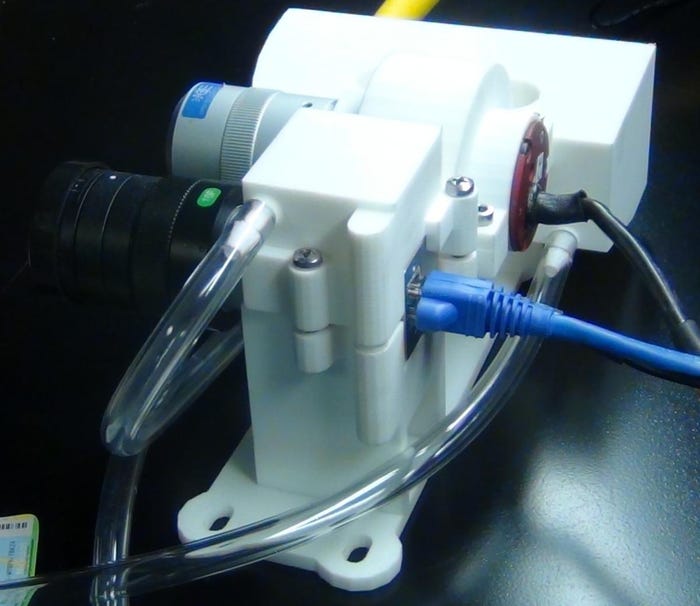Additive manufacturing has evolved from just a cool way to make prototypes for new products into a way to manufacture the products themselves. More and more companies are finding the benefits of 3D printing, also called additive manufacturing (AM), when creating new products. Anubis Manufacturing Consultants Corp. (Mississauga, Ontario, Canada) provides engineering services, equipment development and manufacturing for the pharmaceutical, chemical, consumer goods and food and beverage industries.
December 4, 2013
Additive manufacturing has evolved from just a cool way to make prototypes for new products into a way to manufacture the products themselves. More and more companies are finding the benefits of 3D printing, also called additive manufacturing (AM), when creating new products. Anubis Manufacturing Consultants Corp. (Mississauga, Ontario, Canada) provides engineering services, equipment development and manufacturing for the pharmaceutical, chemical, consumer goods and food and beverage industries.
Tharwat Fouad, owner of Anubis, said that the company has worked "extensively" in all these areas and whether a customer has a highly specified project or an initial R&D project, the company can help fulfill the requirements. Anubis has extensive experience with powder handling equipment, sensors and control instruments.
|
A view of the framework that holds the two cameras in place on the Anubis mass flow meter. |
Recently, Anubis developed, patented and commercialized a mass flow meter for particulates, called the ARBOmeter. The device can operate either as a strictly volumetric device or, with the addition of a hopper and tray, a meter that can measure variable bulk density of materials. The device, which can be installed on existing production lines, is primarily used in the mining, plastics, recycling and food processing industries, and can measure the flow of everything from plastic pellets to powder to potato chips, the company noted.
While the meter has a stainless steel enclosure, inside are a number of delicate electronic components, several of which require a framework that reduces vibration and keeps them in place. The individual frames need to hold each part firmly and accurately at a fixed angle, and allow for easy, tool-free installation and removal. Components that need to be supported include two cameras and an LED light that have different shapes and require unique frames.
"Given the challenges involved in making the frames, using additive manufacturing to make them seemed like a good idea," Fouad said.
The customized nature of the individual frames as well as the low volumes, makes the AM process a cost effective one for Anubis, as well. "With 100 to 500 units per year needed, and about five different parts in each unit, using the plastic additive manufacturing process makes it more economical," Fouad told PlasticsToday. "We're using the additive manufacturing process with the FORMIGA P 100 plastic laser-sintering system from EOS, in this application and in another application where we're doing custom equipment for liquid handling."
The meter's laser-sintered frames are built in batches of four nested sets, seven to a set, over about 20 hours. Each part is made of 100-micron layers, one on top of the other. Anubis has minimized the frames to optimize set sizes and plans to fun five sets at once in the FORMIGA P 100 machine. The company expects to make between 100 and 200 ARBOmeters in 2013.
"The quality, repeatability, and durability of the parts are very satisfactory," Fouad said. "Laser sintering is uniquely suited to our needs on this project."
|
All features - including holes, bosses, and snap fits -- are laser sintered at the same time as the frames. |
Anubis is starting to use the AM process for industrial applications such as for end of arm tooling applications and mechanical components, and selling them in quantity. "As soon as we start talking to end users who are designing equipment, they realize the benefits. It liberates them from the limitations of a mold or CNC machining, and starts them thinking outside the box," explained Fouad. "It also provides freedom to make design changes. We find a lot of ideas on different variations of the product, can make the changes and not have to stick inside the box."
Using the AM process throughout the project allows Anubis to expand business opportunities with its customers. "What we're finding is that once we get the design team involved and help them understand what can be done with the additive manufacturing process, they begin to use it everywhere from prototypes for testing through to end products," Fouad said. "People aren't forced to stay within a certain framework or be limited by the mold or tooling. Complex designs are available and prices are affordable."
About the Author(s)
You May Also Like






